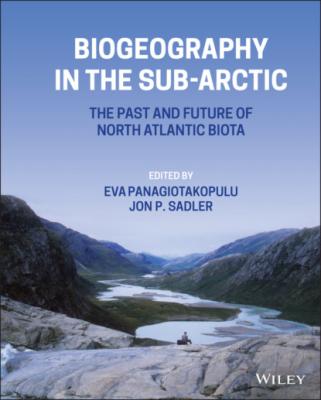Biogeography in the Sub-Arctic. Группа авторов
Читать онлайн.| Название | Biogeography in the Sub-Arctic |
|---|---|
| Автор произведения | Группа авторов |
| Жанр | География |
| Серия | |
| Издательство | География |
| Год выпуска | 0 |
| isbn | 9781118561355 |
Figure 5 (a) A log of Larix sitting in sandy deposits of the Kap København Formation (member B) in North Greenland. The light part has been bleached by the sun. Note the contrasting modern treeless landscape. (b) Organic‐rich layers of the Kap København Formation (member B). (c) Excavation of last interglacial deposits on Jameson Land, central East Greenland. (d) Sandy interglacial deposits on Jameson Land with organic‐rich sediments in the bottom of a trough. (e) Archaeological excavation of a Mid‐Holocene midden in central West Greenland.
Figure 6 Drawings of plant remains from the Kap København Formation in North Greenland. (a‐b) Leaves of Dryas octopetala. Leaf that comes from a plant that grew on a protected site (a) and a narrow leaf with recurved leaf margin, which comes from a plant that grew on a wind‐exposed site (b). (c, d) Leaves of Betula nana. (e) Fruit stone of Cornus stolonifera. (f) Cone of Larix groenlandii. (g) Twig of Thuja occidentalis with three small cones. (h) Twig of Thuja occidentalis with scaly leaves. Thick scale bars: 10 mm, thin bars: 5 mm.
Source: From Bennike (1990).
By far the most diverse group of invertebrates is beetles, of which at least 210 species are present, an impressive and surprising number when compared with the modern day beetle fauna of Greenland that comprises ~36 species (Böcher 1988, 2012). The fossil insect fauna comprise 155 named species, of which 142 species are Coleoptera, mostly Carabidae, Staphylinidae, and Curculionidae. Ants are absent from modern Greenland, so it is remarkable that four species of ants (Formica and Camponotus) are represented in the Kap København fauna. Trichoptera (caddis flies) include nine named species and 12 genera, indicating the existence of a great variety of freshwater biotopes, which is confirmed by the presence of various chironomids, water beetles, macro‐limnophytes, crustaceans and bryozoans. Some examples of insect remains from the Kap København Formation are shown in Figure 7.
The insect fauna of the Kap København Formation allows a detailed palaeoecological reconstruction of a highly diverse environment. Freshwater, freshwater shores, humid terrestrial biotopes, forests and alpine biotopes each contributes about equal numbers of species, with somewhat fewer taxa from dry environments, including steppe and saline ponds (Böcher 1995).
Figure 7 Scanning electron microscope photographs of beetle and ant remains from the Kap København Formation in North Greenland. (a) Head of Cicindela cf. hybrida. (b‐d) Elytra of Aegialia terminalis, Scolytus piceae and Kalissus nitidus. (e) Head of Formica sp. (f) Elytron of Litodactylus leucogaster. Scale bars: 0.5 mm.
Source: From Böcher (1995).
Biogeographically the Kap København fossil flora is dominated by taxa with a modern Holarctic or Nearctic range (Figure 8, see Plate section; Bennike 1990), whereas the fossil insect fauna has an equal share of what are today Nearctic and Palaearctic elements (Böcher 1995). Nine of the beetles from the Kap København Formation are found in Greenland today; most of these are widespread Holarctic, low arctic–subarctic species such as the boreo‐alpine carabid N. rufescens. The greater part of the insects points to temperate conditions, but heterogeneous compositions of some of the insect assemblages indicate either subarctic or temperate summer temperatures (Böcher 1995).
Figure 8 Maps of the northern parts of the Earth, showing present geographical ranges of Picea mariana (a), Thuja occidentalis (b) and Cornus stolonifera (c). Remains of these species have been found in the Kap København Formation (black dot in North Greenland).
Source: From Bennike (1990).
Except in a few cases – the carabid Diacheila matthewsi (Böcher 1995) and a couple of undescribed staphylinids, which probably represent extinct species – all the named insect taxa have been referred to living species. Thus once more the longevity of insect species is demonstrated (Coope 1970, 1978, 1979; Buckland and Coope 1991). A few of the vascular plant remains are referred to extinct species: L. groenlandii, M. arctogale and Aracites globosa (Figure 9). The latter is an enigmatic species that may belong to the family Araceae (Aalto et al. 1992).
Figure 9 Scanning electron microscope photographs of fruits from extinct plants from the Kap København Formation in North Greenland. (a) Myrica arctogale. (b) Aracites
